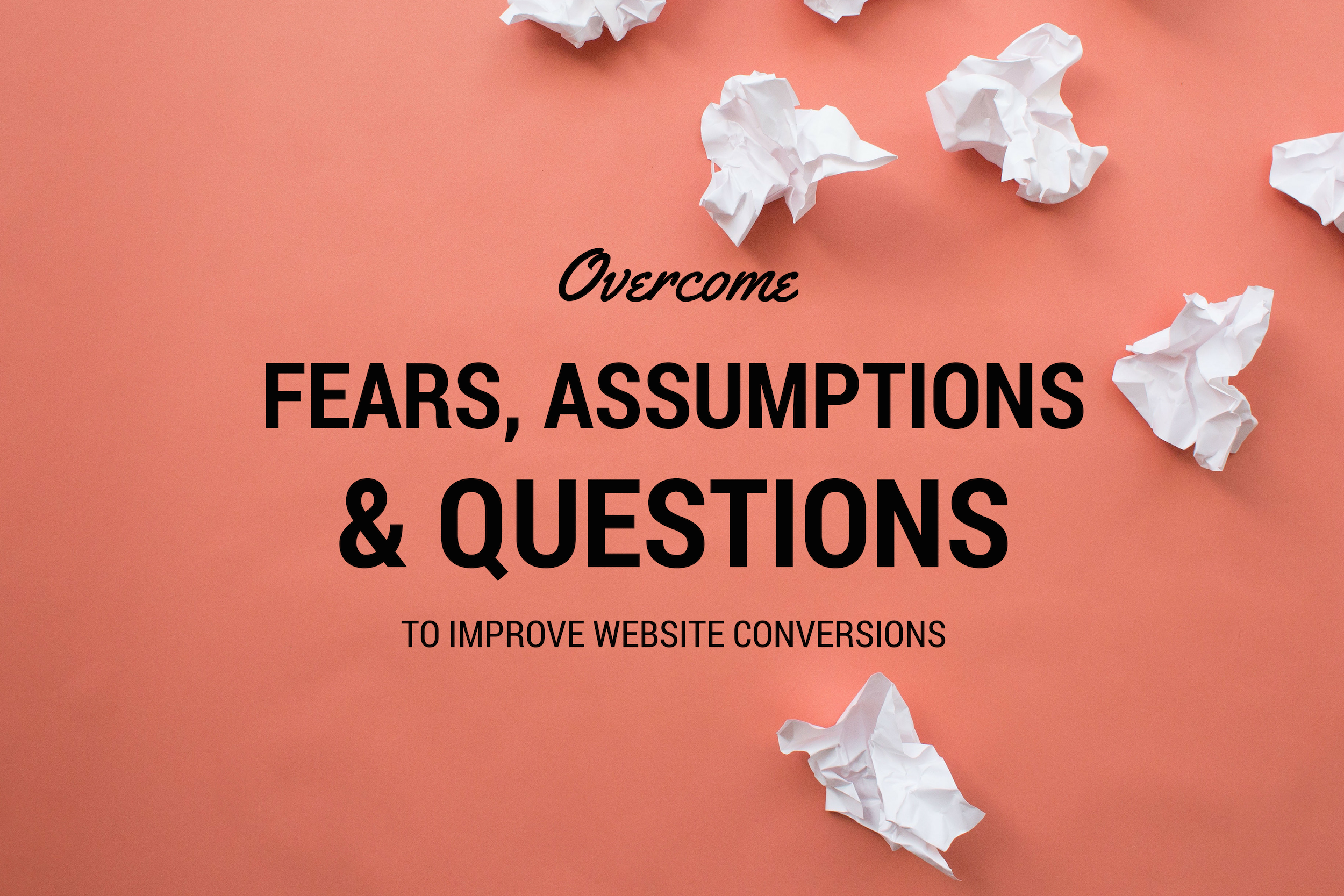I recently investigated website security solutions and followed a recommendation to a popular provider. Their website offered little in the way of answers to the questions I had — how much would this cost me, could I try it on a month-to-month basis before signing a longer contract term, and how long would it take to implement? None of these answers were on their site, but they had a handy “chat now” option, so I clicked.
While their very polite representative signed in quickly and asked how he could help, it took over half an hour to get the answers to these questions. Not because I was asking anything unusual, or because my website situation was unique — only because for every question, it took about ten minutes to get an answer. In the end, I determined that this was not the provider for me — not because they don’t do an excellent job (I hear they do) but because their service wasn’t a good fit for my problem. But the fact that it took so long to get simple answers to predictable questions left me with a bad taste in my mouth, nevertheless. It made me feel like they really didn’t understand someone like me, and weren’t really prepared well to help me. It means that if I do need help they’d be well-equipped to provide, I’ll nevertheless probably look elsewhere.
In a perfect world, every prospect website interaction is a happy one. Prospects ask reasonable questions, you offer helpful responses, and you both leave the conversation satisfied with the result, and with each other.
All too often, unfortunately, support efforts end in frustration for one party or the other. Prospects ask questions for which we don’t have good answers or seem to be asking for things we don’t do. We struggle to understand what would make them happy, or leave them hanging on the line unnecessarily while we hunt down an answer to their questions. Inevitably, we leave some of our ideal prospects unsatisfied, and they turn away.
Obviously, you can’t engineer every support chat to have a perfect result. But there are some fundamental things you can do to ensure that you — and your callers — are better positioned for a great support experience.
The best recipe for more productive support engagements has three ingredients:
- Have absolute clarity about your ideal prospects — as well as the prospects you don’t want;
- Shout that information from your virtual rooftops — making it absolutely to clear to good prospects and poor ones which group they fall into;
- Anticipate the questions your best prospects will ask (and even those they’re thinking about but won’t ask) and make sure you’re answering them clearly and quickly.
Get Serious
First of all, you need to be smart — and brave — about defining who you serve. Too many companies, reluctant to turn anyone away, have a target audience defined as everyone on the planet with a computer and a credit card.
But a target that’s too broad hurts your company. It wastes your time dealing with prospects you don’t want, or who you won’t be able to satisfy. And time spent on the wrong prospects means you’re not spending time on the right ones.
If you’re not doing a good job of identifying your ideal prospects (and your poor ones), how can you expect your prospects to know? How can you expect anyone considering your product or service to KNOW that you’re not a good fit for them?
Struggling to figure out exactly who your ideal customers are? You’re not alone. Luckily, a new program designed for small business owners can help. Learn how to Find Your Audience Axis.
In some ways, clarifying your target audience is the best gift you can offer your front-line team or anyone who is interacting with prospective customers. It will help ensure that they spend their valuable time with likely prospects, and not with those who, in the end, aren’t a good fit for your company. But knowing your target isn’t enough — you need to help your ideal prospects understand that you’re ideal for them, too.
Shout It Out
Having clarity about whose problems you’re best at solving isn’t worth much if you’re not giving prospects that information so they can assess for themselves if you can meet their needs.
One of the biggest time-wasters in a small business is spending valuable time with the wrong prospects. It’s so much more efficient if the wrong people just never contact you in the first place — by finding information on your website, in your whitepapers, and in your webinars that shows them you’re not the solution they’re looking for. It’s better for you, and for them, if nobody’s time is wasted on a chat or call only to find out you’re not a good match.
The best way to make sure you have relevant, helpful and compelling content for your ideal target audience is to understand them — from the problems they’re trying to solve to the alternatives they may have tried, to the concerns that might be keeping them from buying.
One handy approach to put yourself in your prospects’ shoes is to consider their FAQs – Fears, Assumptions, and Questions.
Fears
What are they worried about, when it comes to buying from you? What are the concerns they won’t even voice, for fear of looking uneducated or uninformed? Are they afraid you can’t help, or that they won’t be able to afford you? Are they afraid their privacy won’t be maintained, or that their own systems might become vulnerable? Are they afraid they’ll get locked into a contract they’ll be unable to get out of if they’re unhappy? Are they afraid they’ll be a small fish in a big pond, and won’t get the attention they deserve? Are they afraid that your excellent service while they’re shopping will evaporate once you have their money? Recognizing and responding to these fears is a helpful and relevant source of content your prospects will appreciate.
Assumptions
What are they assuming will be true about working with you? Are their assumptions true, or false? Often prospects won’t even share their assumptions with us because they believe them to be unassailable truths. But if they’re operating on the basis of a false assumption planted by a competitor, the media, online reviews or even their own experience with another provider, you need to correct them. Addressing common assumptions can correct opinions they didn’t even realize might be misleading them.
Questions
What questions do your prospects have about engaging with you? If you keep track you’ll likely see a pattern of common questions asked by prospects while considering your service. Prospects considering their first purchase in your category might be asking general questions about how it can help them. More experienced prospects looking for a new provider will likely want comparisons between your product or service and others out there. Does your company have a popular reputation (good or bad)? Prospects will often have questions about its veracity. What do you cost? How does it work? What are the technical requirements? How difficult is your software to learn? How do you secure my data? A detailed list of questions is a great place to start with helpful content.
Arm Your Team
Having a wealth of content responding to prospects’ concerns, assumptions and questions is a huge boon to both your prospects and your support team — but only if it’s easy to find. Make sure it’s readily available on your website. Send it in your email newsletters. Use it as the basis for free webinars or podcasts. The more visible your content is, the easier it will be for the wrong prospects — those who can’t afford your service, or those who want something you don’t provide — to know that and turn away before wasting their time (and yours) contacting your support team. And seeing content that’s highly relevant to them shows your ideal prospects that you understand them and care about the problems they’re trying to solve.
And in turn, make sure your marketing and sales team understands the questions prospects and customers are likely to ask, and that they have access to the answers at their fingertips — so that when a chat participant asks a question, your team has a ready response that’s easy to share.
Understanding your ideal prospects, and the problems they’re trying to solve, is the first step. But putting yourself in their shoes and developing content that answers their most fundamental concerns, reassures them that you’re the right solution — and ensures that more of your live chat discussions will be helpful, positive and likely to convert.
Susan’s new online program “Find Your Audience Axis” helps small business owners determine who their best prospects are, and how to help them find you. Registration for her program is open through January 22nd, 2016. Find out more here.






